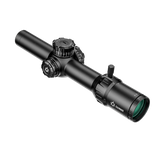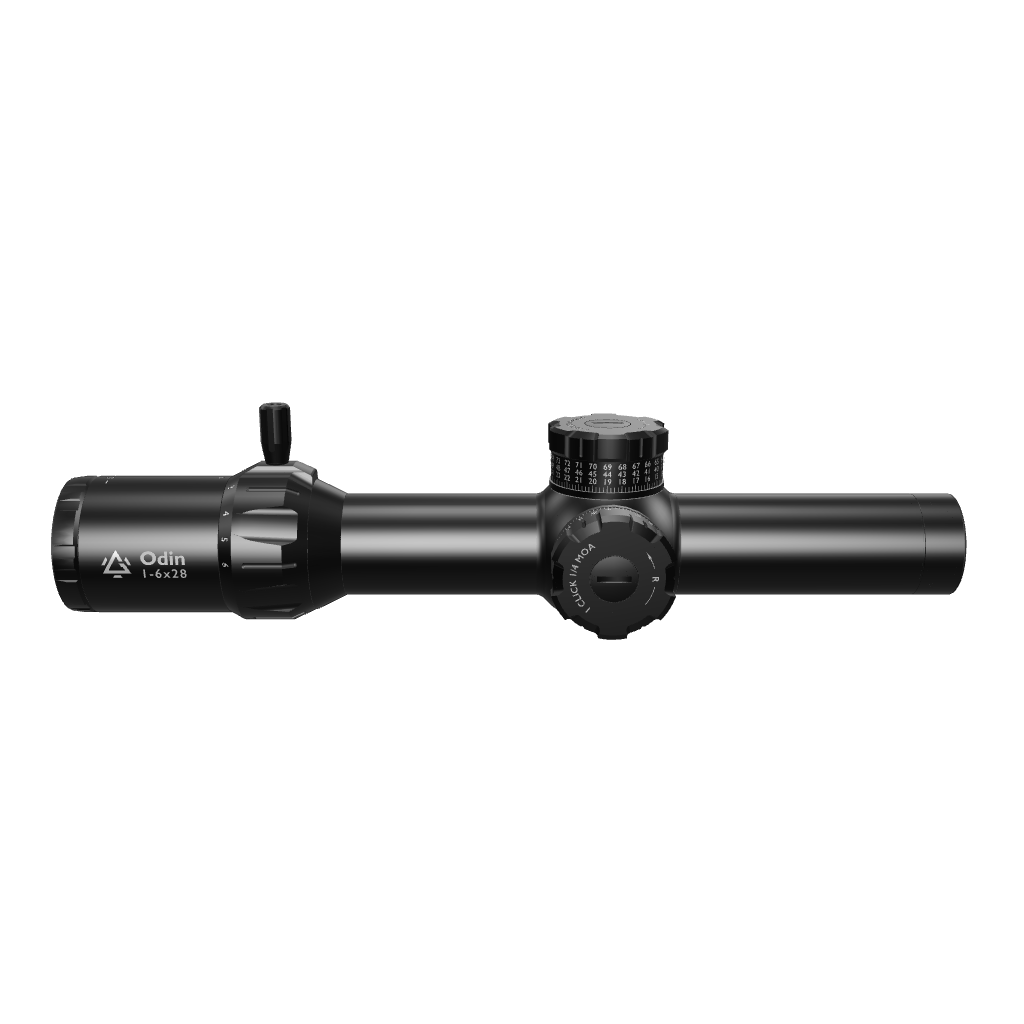How to Use a Christmas Tree Reticle
For many long-range shooting disciplines, Christmas tree reticles have become simply indispensable. If you are the average long-range shooter, a lot of your success will depend on how familiar you are with a Christmas tree reticle and how well you can use it.
The key to learning how to use a Christmas tree reticle is to understand each of its components, from the central vertical line to the horizontal markings branching out from it.
When you understand how these lines correspond to range and wind compensation, as well as how they facilitate holdovers for various distances, then you are ready to use a Christmas Tree Reticle
We are diving into the mechanics of the Christmas Tree reticle, breaking down how it can elevate your shooting, and exploring key tips and techniques that will make you a better marksman.
Key Components of the Christmas Tree Reticle
To master how to use a Christmas tree reticle, you must first be able to identify its main components and master how they work and what they do.
A Christmas tree reticle typically has 4 main components: the central crosshair, the vertical line, the horizontal branches, and (for some) additional lines.

i. The Central Crosshair
- The central crosshair is the focal point of the reticle, and it usually corresponds to your zeroed distance.
- The role of the central crosshair is to indicate accuracy at a predetermined distance (formally known as zero distance).
- In other words, this is where you’ll aim for targets at a known distance when there’s little to no need for holdover adjustments.
ii. Vertical Line (Primary)
- The vertical line is the backbone of the “tree,” and it represents your windage hold adjustments.
- It comes in handy at longer ranges when you may need to move your aim left or right to compensate for wind.
- The Christmas Tree reticle helps you quickly dial that in.
iii. Horizontal Branches
- The horizontal lines extending from the main vertical line give you a reference for adjusting your elevation at various distances.
- They can be used for holdovers at longer ranges based on your rifle’s ballistics.
iv. Additional Lines
- Some Christmas Tree reticles feature extra hash marks, dots, or smaller subdivisions, each corresponding to specific range increments.
- These lines are there primarily to provide finer resolution for long-range shooting.
- They allow you to make precise adjustments based on your specific target and environmental conditions.
How to Use a Christmas Tree Reticle
With a basic understanding of the components or parts, it should be easier to use a Christmas Tree reticle to enhance your shooting effectively.
1. How to Zero Your Rifle
Here’s the first tip for using a Christmas tree reticle: Use your center crosshair as your point of aim when shooting at zero distance.
The idea behind zeroing a Christmas tree reticle is that, at a known distance (typically 100 or 200 yards), your primary crosshair should be aligned with your point of impact.
When you’ve achieved a solid zero, your primary crosshair is what you’ll use for the distance you’ve zeroed your rifle.
For example, if you’ve zeroed at 100 yards, use the center crosshair as your point of aim when shooting at that distance.
As with any other type of reticle, zeroing is a foundational step. If your rifle isn’t zeroed, any reference from the Christmas Tree reticle will be meaningless.
2. Understanding Your Holdovers
Here’s the second tip for using a Christmas tree reticle: Using the horizontal lines, you can adjust your aim without moving the turrets.
As distances increase, your bullet’s trajectory changes and the Christmas Tree reticle is designed to compensate for this. The horizontal lines give you an intuitive way to adjust your aim based on the range of your target.
For Example
- Let’s say you’re shooting at 300 yards, and the reticle has a horizontal line that corresponds to that distance.
- Instead of adjusting the turrets on your scope, you can simply aim at the appropriate horizontal line for that range.
- This means you don’t need to take your eyes off the target to make a mechanical adjustment to your rifle. It’s a faster, simpler way to compensate for bullet drop.
In addition to elevation, you’ll also encounter windage adjustments along the vertical line. If you’re shooting in windy conditions, the tree structure allows you to adjust your aim for wind drift, which is crucial when shooting over long distances where even slight wind changes can significantly affect your shot placement.
3. Dealing with Wind Compensation
You can compensate on the fly without having to fiddle with your turrets (which might not always be practical in dynamic shooting scenarios).
One of the main reasons why Christmas tree reticles are a favorite is that they assist with windage adjustments. By using the vertical lines, you can hold off to the left or right, depending on the wind conditions.
Some reticles feature graduated marks that are calibrated for windage compensation at specific distances (e.g., 5 mph, 10 mph), so you can adjust your aim accordingly.
4. Aiming at Quick Targets and Making Quick Adjustments
Here's the fourth tip for using a Christmas tree reticle: You don’t have to adjust everything manually. The quick reference points help make snap decisions without having to pause and make major adjustments.
The various "branches" of the tree give you a range of aim points that correspond to different distances, which means you don’t need to calculate everything manually.
Instead, you can focus on the target and adjust your point of aim by simply shifting along the vertical or horizontal lines to account for the target’s speed, distance, and wind conditions.
A Christmas Tree reticle also shines in fast-moving shooting situations. Whether you're shooting at a running animal or a moving target in competition, the reticle allows for quick and intuitive holdovers at varying ranges.
5. Fine-Tuning for Precision
If you get a good quality Christmas tree reticle, you can make even more precise adjustments with the help of the finer reticle markings.
Many Christmas Tree reticles come with small incremental markings between the larger lines. These finer markings provide shooters with a level of precision that goes beyond basic elevation and windage compensation.
For example, if your target is between two known distances—say 500 and 600 yards—you can use the smaller subdivisions to estimate the precise holdover for intermediate distances. Some reticles even have finer “dots” or additional hash marks within the larger branches, which make this even more granular.

Practical Tips for Success
Practice is Key
- Familiarity with your reticle’s markings is essential for quick decision-making.
- Practice shooting at various distances with your Christmas Tree reticle, and get used to transitioning between the different holdover points.
Understand Your Ballistics
- It’s always a good idea to consult a ballistics chart for your rifle’s ammunition to know what bullet drop you can expect at certain distances.
- The Christmas Tree reticle can help, but you still need to understand how your rifle’s ballistics interact with the reticle.
Consider Wind Estimation
- The reticle is only as good as your ability to estimate wind.
- Practice reading wind conditions and matching them with the windage lines on your reticle. The more accurately you can judge wind speed, the better your results.
Keep Consistent Zero
- Always check your zero periodically, especially if you're switching ammunition or shooting at drastically different temperatures.
- A consistent zero is vital for relying on the Christmas Tree reticle.
- If possible, ensure that your optic has a zero-stop function for consistency as far as zero is concerned.
Best Christmas Tree Reticle Optics
A Christmas tree reticle optic is a powerful tool for a long-range shooter. With an intuitive and effective way to compensate for bullet drop, windage, and holdover adjustments—all without needing to adjust your turrets- you can maximize your speed and efficiency in every shooting scenario.
The Odin collection contains some of the best LPVO optics for sale this year. Depending on your shooting needs and preferences, you can choose between the Odin 1-6x28 FFP LPVO, the Odin 1-8x24 LPVO, or the 1-10x28 LPVO.
Here are some of the features you get
What is a Christmas Tree Reticle?
A Christmas Tree reticle, as implied in the name, is a reticle design that has a shape somewhat reminiscent of a tree: a central vertical line that extends downward with a series of horizontal markings branching out from it. These horizontal marks form the “branches” of the tree.
Conclusion
Understanding the function of the vertical and horizontal lines, practicing with various distances, and applying windage estimations will enable you to take precise, rapid shots in almost any condition.
Even if you are just a casual shooter who doesn't need to follow up shots quickly, it is always nice not to have to waste ammo walking things in when you are zeroing a rifle.
Check out other important tips on how to clean your LPVO. If you own an AR-15, learn why the Gogunnr has the best LPVOs for AR-15 rifles.







